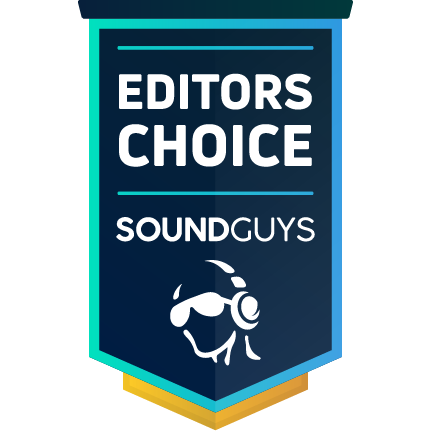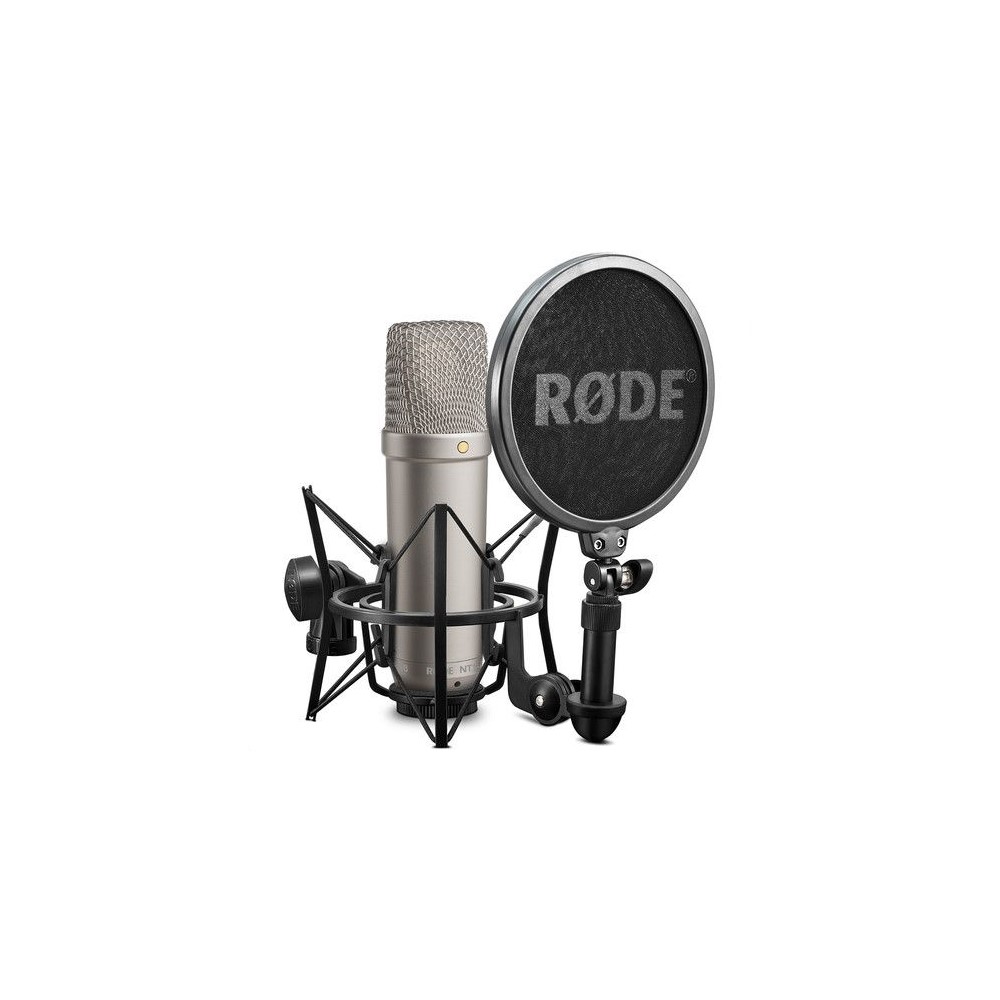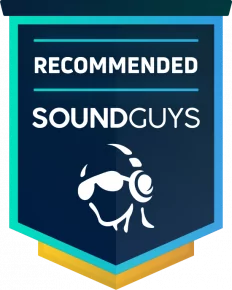All products featured are independently chosen by us. However, SoundGuys may receive a commission on orders placed through its retail links. See our ethics statement.
Best vocal microphones: Sound your best live, at home or in the studio
July 31, 2025

Your voice is your instrument, so why not give it the spotlight it deserves? Whether you’re belting out power ballads or softly narrating your next podcast, the right mic can make all the difference. The best vocal mics don’t just capture sound—they flatter your voice, boosting all the right tones to help you sound like a pro. We’ve rounded up our five favorites to help you sound your best, no matter what you’re recording.
- July 31st, 2025: Updated formatting and general information about the best vocal microphones in 2025.
The Quick Answer
Check out our top picks below for a quick guide to the best vocal microphones that suit your needs and budget. Each has a link to our full review.
The best overall:
The best for studio recording:
The best premium pick:
The best for versatility:
The best on a budget:
Why is the Shure SM58 the best vocal microphone?


The Shure SM58 is a no-nonsense XLR microphone built for vocals. Its tailored frequency response emphasizes vocal clarity while minimizing the proximity effect, making it easy to sound good without much effort. A patented pneumatic shock mount helps reduce handling noise, and the dynamic cardioid design easily rejects background sound while handling high volumes.
These features make the SM58 a go-to for live performance, but it’ll also work in a pinch for studio use if you’re on a tight budget. It’s all-metal, road-tough, and doesn’t need phantom power. That durability and plug-and-play simplicity are a big part of why it’s remained a staple for decades.
If you plan to record vocals in a studio, adding an external pop filter helps tame plosives. Still, a condenser mic will give you better detail and sensitivity for serious studio use. But for sheer value and versatility, especially when it comes to durable microphones for live performance, it’s hard to beat the SM58.
The Shure SM58 is the most widely used dynamic microphone out there, and for a good reason. Take a listen for yourself:
Shure SM58 speaking samples (Non-standardized):
Shure SM58 singing sample (Non-standardized):
How does the microphone sound to you?
Read our full Shure SM58 review
The best mic for studio recording is the Rode NT1-A


The Rode NT1-A excels in vocal recording thanks to its high sensitivity of -31.9dB, which captures everything from soft whispers to powerful singing. This condenser microphone requires phantom power, ranging from +24V to +48V, and offers a cardioid pickup pattern that isolates the vocal, minimizing any background noise for a clean recording.
Setup is a breeze; it comes with a 6m long XLR cable and a sturdy shock mount. Just connect it to an audio interface or voice recorder capable of supplying phantom power, and you’re good to go. The microphone itself is robustly built with stainless steel and tips the scale at 326g, indicating it’s designed for studio permanence rather than portability.
The NT1-A, however, requires attention to detail with sibilance, as ‘s’ and ‘t’ sounds can be rather pronounced. An included pop filter helps, but an upgrade may be in order for optimal performance. With its low self-noise and flat frequency response, it delivers pristine sound quality that needs minimal tweaking in post-production. If you’re after a versatile, reliable microphone that provides outstanding value, the Rode NT1-A makes the cut as one of the best in vocal recording.
The Rode NT1 does a great job of reproducing your voice just how it sounds live.
Rode NT1 speaking sample (Non-standard):
Rode NT1 singing sample (Non-standard):
How does the microphone sound to you?
The current version of the Rode NT1 was created after the NT1-A. They’re very similar except for when it comes to the frequency response. While the NT1-A has a neutral-leaning frequency response, the NT1 has a very neutral-leaning frequency response. If you’re looking for a sound that gives you free rein to mix and edit however you like, the NT1 is a better choice. However, if you’re looking for a slightly more colored response, the NT1-A, in comparison, offers a slightly high boost and bass attenuation. Both mics have very low self-noise and produce a lovely sound overall, so you can’t go wrong with either choice.
Read our full Rode NT-1A review
The Shure SM7dB will last you a lifetime
The Shure SM7dB is a modern take on the classic SM7B, a mic that’s been a staple in broadcast studios and vocal booths for decades. With the same iconic sound and rugged build, the SM7dB adds a few smart upgrades to make it easier to use, without losing what made the original special.
This dynamic XLR mic delivers smooth, rich vocal tone and easily handles loud sources. It also flatters just about any voice, which is why it’s a favorite for everything from podcasting to metal vocals. Whether you’re a seasoned pro or just getting started, it helps you sound polished and professional right out of the gate.
The built-in preamp is the big upgrade here, offering a selectable +18dB or +28dB of clean gain. That solves a long-standing issue with the original SM7B, which often needed an external preamp to hit usable levels. Just note that phantom power is required to use the gain boost, even though the mic itself can function in passive mode without it.
It features a cardioid pickup pattern that blocks out unwanted noise from the sides, plus an internally shock-mounted capsule to keep handling sounds to a minimum. A built-in pop filter and detachable windscreen help reduce plosives and breath noise.
You also get three switchable EQ settings—bass roll-off, flat, and a high-frequency presence boost—so you can dial in the sound that suits your voice. The flat setting is your best bet for the most accurate vocal capture.
The Shure SM7dB has a couple of different settings that all sound slightly different. Check them out here:
Shure SM7dB +28dB boost engaged:
Shure SM7dB +18dB boost engaged:
Shure SM7dB without the boost:
Shure SM7dB bass roll off:
Shure SM7dB with presence boost:
Which frequency response do you prefer?
Read our full Shure SM7dB review
The Shure MV7+ offers the most versatility

The Shure MV7+ is a flexible desktop mic that delivers a polished, professional sound whether you’re streaming, podcasting, or recording vocals. If you’re just starting out, it works great as a plug-and-play USB-C mic. However, if you want more control, the MV7+ also includes an XLR output, and you can even use both connections simultaneously.
You can plug it straight into your laptop or phone via USB-C, or route it through an audio interface using the XLR jack. You can access Shure’s MOTIV Mix app to shape your sound and apply effects in real time when using USB-C. You can also record a processed track through the app while capturing a clean backup through XLR into your DAW.
The MOTIV Mix app is currently in beta and only works over USB-C. On desktops, you can download it from Shure’s site. For mobile users, the Shure MOTIV Audio app gives you the same controls. Both apps let you tweak gain levels, adjust outputs, and apply vocal effects like studio, plate, or hall reverb. There’s also a high-pass filter with 75Hz and 150Hz settings, an Auto Gain toggle, and even RGB lighting customization for the mic’s LED strip.
The Shure MV7+ captures your voice with clarity and detail. Check out the samples below to hear how it sounds in action.
Shure MV7+ microphone XLR connection demo:
Shure MV7+ microphone USB-C connection demo:
How does the microphone sound to you?
Read our full Shure MV7+ review
You’ll get the best bang for your buck with the Movo UM700

If there was ever a Blue Yeti X killer, it’s the Movo UM700. This USB microphone has four selectable polar patterns—cardioid, stereo, omnidirectional, and bidirectional—and they all sound great. While USB microphones aren’t the same quality as XLR microphones, the Movo UM700 comes close. It comes with a preinstalled and removable windscreen that helps reduce plosive sounds. The UM700 is only $99, and because it’s a USB mic, you won’t have to invest additional money into an audio interface to use it.
Onboard the mic is a gain control knob, volume control knob, quick mute button, and polar pattern adjustment knob. Conveniently, you can adjust the mic’s gain, which is its input volume, separately from its output volume. The quick mute button illuminates in red when the mic is muted, so you can have that extra reassurance that your microphone is off when you’re sitting through a Zoom meeting. The mic also has an auxiliary port on the bottom that can be used for direct monitoring.
For a USB mic, the UM700 sounds pretty darn good.
Movo UM700 cardioid pattern speaking sample (non-standardized):
Movo UM700 stereo pattern speaking sample (non-standardized):
Movo UM700 omnidirectional pattern speaking sample (non-standardized):
Movo UM700 bidirectional pattern speaking sample (non-standardized):
Movo UM700 cardioid pattern singing sample (non-standardized):
How does the microphone sound to you?
Read our full Movo UM700 review
Are the Beyerdynamic M70 PRO X and M90 PRO X good for singing?

The Beyerdynamic M70 PRO X is similar to the M90 PRO X, except that it is a dynamic broadcast microphone. It is also great for vocal applications, whether you’re hosting a radio show or singing. Its frequency response is tailored to the human voice and comes with a useful elastic shock mount and pop filter.

Yes, the Beyerdynamic M90 PRO X is a great XLR microphone for vocalists and general recording. This condenser mic has a cardioid recording pattern and faithfully preserves faint vocal detail, allowing you to affect it however you want during post-production. There aren’t any gimmicks to this microphone, making it an excellent pick for professionals and serious enthusiasts. You get an elastic shock mount and pop filter, but other than that, you’re on your own for phantom power and/or an audio interface that supports XLR inputs.

The best vocal microphones: Notable mentions

- Audio-Technica AT2020 ($99 at Amazon): This cardioid condenser mic is a great budget option for vocalists. Just keep in mind that it isn’t great at mitigating plosives and fricatives, so you’ll definitely want to attach the included pop filter to it.
- Blue Yeti Nano ($48 at Amazon): This is another convenient USB microphone. It has two adjustable pickup patterns and solid sound quality.
- Blue Yeti X ($139 at Amazon): If you want a microphone to stream or record at home with, the Yeti X is probably the easiest one to get usable results from with a USB connection. It won’t challenge a studio setup, but it will be a rock-solid desktop companion.
- Electrovoice RE20 ($449 on Amazon): The RE20 is a dynamic microphone so that it can withstand loud speech, and you won’t need any external power. Its frequency response is tailored to human speech and includes a bass attenuation switch to offer extra protection against low-frequency rumble. This XLR mic has a cardioid polar pattern, so it rejects off-axis sound for crystal-clear voice-overs.
- SE Electronics sE2300 ($344 at Amazon): This condenser mic has three switchable pickup patterns and a neutral-leaning frequency response with a treble boost, allowing for vocal clarity. It also comes with a pop filter and shock mount.
- Shure 55SH Series II ($199 at Amazon): Not only will this microphone make you feel like Elvis, but it also sounds fantastic on the vocal frequencies. It doesn’t require any phantom power and is very durable, and its cardioid polar pattern makes it great at rejecting off-axis sound.
- Shure SM4 ($269 at Amazon):The Shure SM4 is a solid dynamic mic that works great for voice recording at home or in the studio. Its focused pickup helps block out background noise, so your voice comes through clear and clean.
- Warm Audio WA-47jr ($40 at Amazon): Inspired by a much more expensive Neumann K-47 capsule, this FET mic comes with three polarity patterns and a pretty accurate frequency response.
What should you know before buying a microphone?

If you’re looking for a mic specifically for picking up the voice, it’s most important to look at the mic’s frequency response, how it accounts for unwanted noise, and its polar pickup pattern.
If you’re recording into a good microphone but it sounds bad, there may be a few things you can do to remedy this. For one, when recording vocals, it’s necessary to have a pop filter to reduce the sound of plosives and fricatives (“P” or “F” sounds). Some performance microphones, such as the Shure SM58, have internal pop filters, whereas many studio microphones require one to be externally mounted.
An internal shock mount can protect against noise that comes from handling the microphone. These are more necessary in live or radio broadcasts than in studio mics simply due to how much they will be handled, but they are always an asset nonetheless.
Self-noise refers to the amount of low-level hiss produced by the mic when there’s no sound entering it. It’s an unfortunate consequence of the internal electrical components creating random noise that is recorded as a low, but irritating static sound. You’ll want it to be as low as possible so your vocals sound crystal clear.
What is frequency response?

Just like headphones, microphones have frequency responses and plots. A microphone with a neutral-leaning frequency response will most accurately reproduce the sound of your voice and won’t emphasize or under-emphasize a particular frequency range of your voice. You won’t get a perfectly “flat” frequency response from a microphone, or headphones for that matter, but some microphones get you pretty darn close. Many people tout a “flat” response as the best because it most accurately captures a sound source’s actual sound. It also makes it easier to edit audio when you have a microphone with a neutral response, but this typically comes at a steeper price point.
Some people don’t want or need an ideal response, which is why many microphones have certain filters, such as a high- or low-pass filter, to adjust the sound while recording.
What is a microphone’s polar pattern?

Polar patterns refer to the direction from which a microphone picks up its sound. When recording or amplifying vocals, it’s usually best to go for a cardioid or hypercardioid pickup pattern because these best reproduce sound from the on-axis, and reject sound from the back, so the voice is heard above other noise. All of the best vocal mics on this list have cardioid pickup patterns.
What is the difference between condenser and dynamic mics?
Depending on whether you’re looking to record vocals or amplify them in a live setting, you’ll want to consider the differences between condenser and dynamic mics. As a rule of thumb, dynamic mics are great for live performances because of their ability to handle loud inputs without distorting, but some dynamic mics, such as the Electrovoice RE20, are used in radio stations due to their ability to shut out unwanted room noise.
Condenser mics are typically preferred for studio settings because they are more sensitive, produce a more natural frequency response, and are better at picking up subtleties that vocalists often want in their recordings. Condenser microphones often require phantom power, which an audio interface can provide.
Occasionally, when recording, you need more gain to power dynamic microphones. If you don’t have enough gain to reach the appropriate volume, you might need a Cloudlifter CL-1.
What is the proximity effect?

You’ll observe the proximity effect in action when you speak too close to a microphone. The proximity effect increases low-frequency output when the distance between the sound source and microphone is so small that the two objects are nearly touching. The closer the microphone gets to a sound source, the greater the bass boost. Many mics for vocals have high-pass filters, which attenuate low-frequency noises and can help counter bass emphasis due to proximity. You can also fix this with a software filter later on.
Why you should trust SoundGuys

Each writer at SoundGuys has accumulated years of experience reporting on the consumer audio market, and our staff adheres to a strict ethics policy. We never use sponsored content on the website at a time when doing so is the norm. SoundGuys’ survival depends solely on readers enjoying their purchases. We pride ourselves on transparently outlining objective facts while accounting for the subjective experience to contextualize an audio product’s performance. When we do misspeak, we correct and own up to it.
Frequently asked questions about microphones
The best microphone for singing live is the Shure SM58, and the best microphone for recording singing is either the Rode NT1, Shure SM7b, or newer Shure MV7+.
Yes! In fact, we have a whole article about wireless microphone systems and our favorites.
The most useful microphone for a singer in a band is typically a dynamic cardioid microphone, such as the Shure SM58, due to its durability, feedback rejection, and focused sound pickup.
Thank you for being part of our community. Read our Comment Policy before posting.
